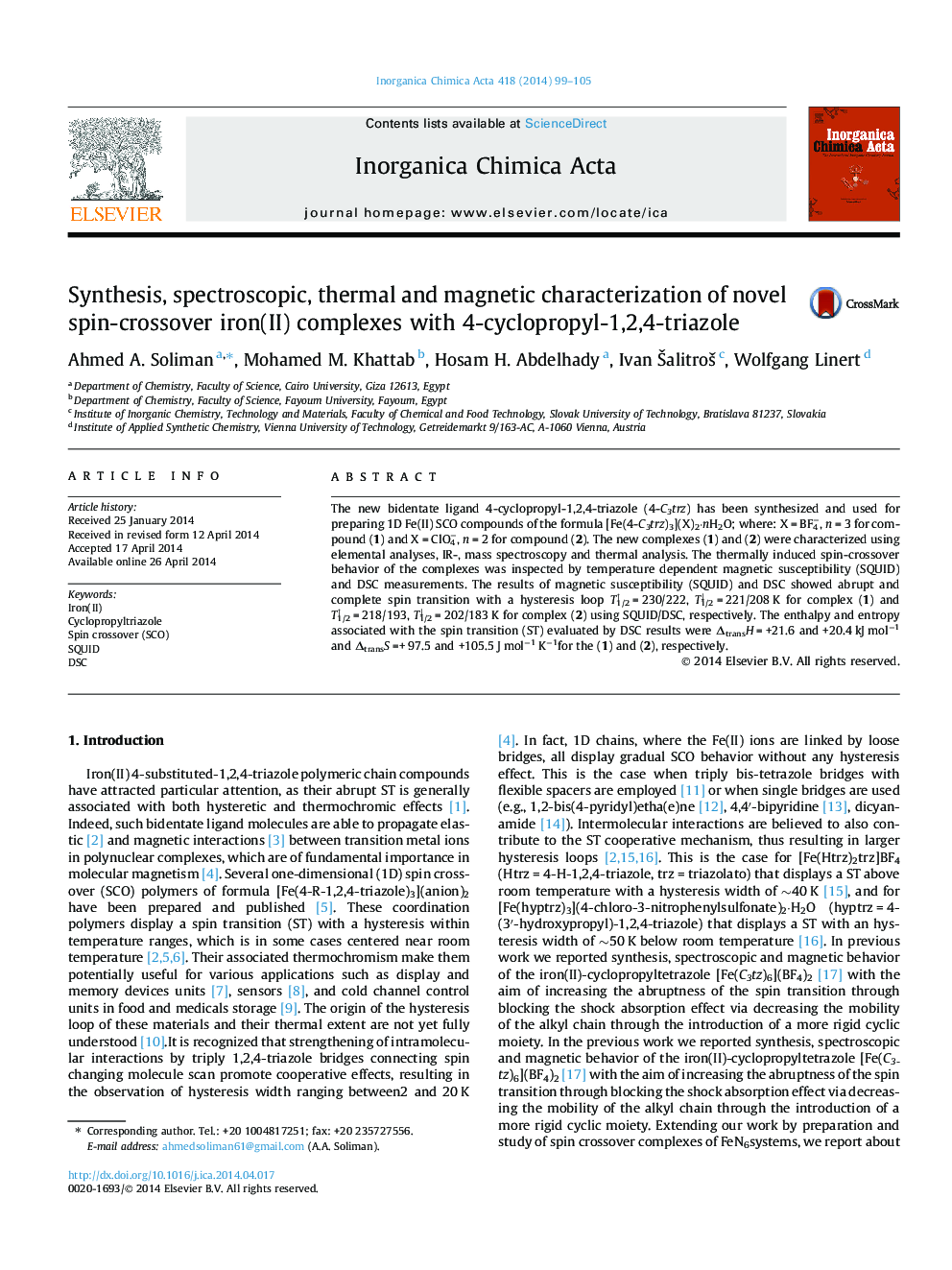| Article ID | Journal | Published Year | Pages | File Type |
|---|---|---|---|---|
| 1309810 | Inorganica Chimica Acta | 2014 | 7 Pages |
•A new 4-cyclopropyl-1,2,4-triazole was synthesized.•1D [Fe(4-C3trz)3](BF4)2·3H2O and [Fe(4-C3trz)3](ClO4)2·2H2O chains were prepared.•The complexes were characterized by analytical methods.•SCO was inspected by magnetic susceptibility (SQUID) and DSC measurements.•The improved cooperativity was attributed to hydrogen bonding interactions.
The new bidentate ligand 4-cyclopropyl-1,2,4-triazole (4-C3trz) has been synthesized and used for preparing 1D Fe(II) SCO compounds of the formula [Fe(4-C3trz)3](X)2·nH2O; where: X = BF4−, n = 3 for compound (1) and X = ClO4−, n = 2 for compound (2). The new complexes (1) and (2) were characterized using elemental analyses, IR-, mass spectroscopy and thermal analysis. The thermally induced spin-crossover behavior of the complexes was inspected by temperature dependent magnetic susceptibility (SQUID) and DSC measurements. The results of magnetic susceptibility (SQUID) and DSC showed abrupt and complete spin transition with a hysteresis loop T↑1/2 = 230/222, T↓1/2 = 221/208 K for complex (1) and T↑1/2 = 218/193, T↓1/2 = 202/183 K for complex (2) using SQUID/DSC, respectively. The enthalpy and entropy associated with the spin transition (ST) evaluated by DSC results were ΔtransH = +21.6 and +20.4 kJ mol−1 and ΔtransS =+ 97.5 and +105.5 J mol−1 K−1for the (1) and (2), respectively.
Graphical abstractNew 4-cyclopropyl-1,2,4-triazole (4-C3trz) was synthesized and used for the preparation of 1D Fe(II) SCO compounds of the formula [Fe(4-C3trz)3](X)2·nH2O (compound (1): X = ClO4−, n = 3; compound (2): X = BF4−, n = 2). The results of magnetic susceptibility (SQUID) and DSC showed abrupt and complete spin transition with a hysteresis loop T↑1/2 = 230/222, T↓1/2 = 221/208 K for tetrafluoroborate and T↑1/2 = 218/193, T↓1/2 = 202/183 K for the perchlorate analog using (SQUID and DSC), respectively. The enthalpy and entropy associated to the ST evaluated by DSC results as ΔtransH = +21.6, +20.4 kJ mol−1 and ΔtransS =+ 97.5, +105.5 J mol−1 K−1 for the BF4− and ClO4− analogs, respectively.Figure optionsDownload full-size imageDownload as PowerPoint slide
